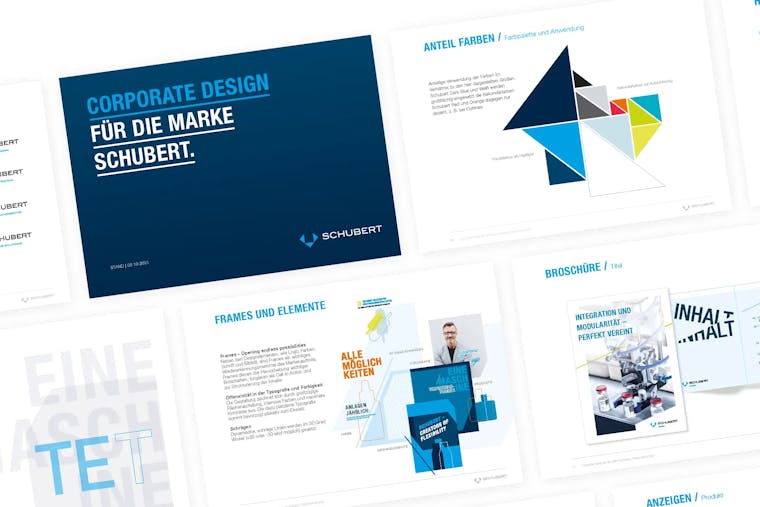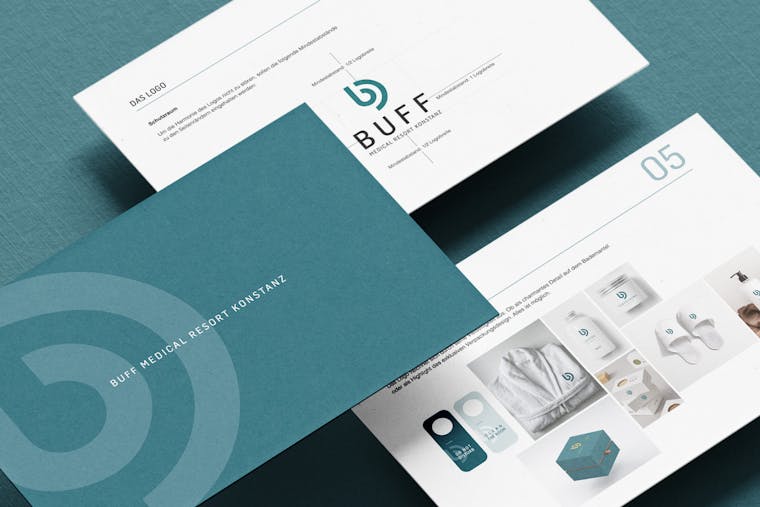Corporate design agency
Design skilfully translates a company's offering into visual language that can reach the target group on an emotional level. A design agency strengthens the purpose and image of a company through visual messages.
However, the starting point of this process is a well-founded consultation focusing on the company's positioning and strategy. The ultimate goal is to make companies and their offerings tangible and comprehensible across all media – from websites to business cards – with a compelling design. This is how trust is built with the target group, and the company can grow along with it.
Corporate design and the user experience (UX) go hand in hand. Only if a company is able to offer an intuitively understandable website design will it be perceived as competent and appealing. This applies not only to the company website but also to apps, newsletters or QR codes on print materials.
As a design agency, we consider it is essential to test our ideas as early and as extensively as possible, and to analyse and evaluate the results. In this respect, we are not just a design agency. We offer our customers a far-reaching portfolio of services ranging from market research and strategy development to media relations, all of which are essential when it comes to design. It is important to think beyond the next interface and to create a comprehensive concept in an interdisciplinary manner with the help of a range of specialists.
This is precisely where our strength lies. We at the Ruess Group pursue a results-oriented approach to deliver the best for our customers.
Your contact



Corporate design agency: Achieving added value for companies
A company's corporate design is much more than just an aesthetic feature. It represents the visual identity of a company and gives it a face. A corporate identity is vital for establishing a clear market position and standing out from competitors – especially for medium-sized companies and their corporate communication.
A company's powerful, clear positioning is most effective when it is based on solid, actively practised corporate values and when the brand design is in line with the corporate identity. This allows the brand to have a significant influence on purchasing decisions.
Professional corporate design acts as a living manifestation of brand personality. It visualises and communicates brand strategy, identity and values – thereby generating a consistent recognition experience at every point of contact. That is why, for us as a design agency, design begins with the brand and brand development. Together, we develop a brand identity for your company that uses elements such as fonts, colours and visual features to convey a consistent message.
A company's logo is the cornerstone of its corporate design. It represents what the company stands for. The process of developing a corporate design and, ultimately, a logo begins with creative concept development and ultimately leads to its application to products, advertising media and various communication channels such as social media and other digital applications. We begin with a comprehensive analysis of your company and your target group, the industry and the competitors. We work out USPs, mission, vision and brand essence. This way, your logo will be exactly what you have been looking for: a visual representation of your values.
Our goal as a design agency: Understanding and implementing visions
As a design agency, we provide our clients with a broad range of creative services that all have to do with visualisation – but involve so much more than just a pretty face, whether digital or analogue. At its core, it is always about improving a company's image and brand identity.
Graphic design
Graphic design is an essential part of visual communication. We create logos, business cards, brochures, flyers, campaigns and more for our clients. It is important to us that our design always reflects your company's brand. Graphic design has to be creative and original, aesthetically pleasing and functional. But these aspects should never be more important than conveying a clear, coherent brand message.
Web design, UX and conversion optimisation
For us, design goes hand in hand with usability. UX design is all about making applications and websites as user-friendly as possible. If a website or user interface is not intuitive or is complicated to use, users will leave before they find what they are looking for. Good UX design enables users to navigate intuitively through a site. As a UX design agency, we first analyse your website or application before we start A/B testing to provide your users with the best possible experience.
Illustrations, animations & multimedia
It isn't uncommon in everyday life to need illustrative visuals or animations to explain products and services. As a design agency, we create a portfolio of visual content that can be used for campaigns and internal purposes – and always reflects your company.
Trade fair design
As a design agency, we understand that looks alone aren't enough
Design can add value to marketing that goes far beyond the aesthetic dimension. But only if the design is based on a well thought-out concept and a long-term strategy.
A well-thought-out design that conveys a brand message across all communicative touchpoints not only makes a brand visible, but also trustworthy, and creates an emotional bond through its recognition value. This is how a company sets itself apart from the competition in the market and makes a lasting impression.
As a design agency, our mission is to develop and design a look for your company that stands out – while still reflecting the visual habits of your target groups and the market. To this end, our graphic and web designers are involved in all areas of marketing. This is the only way we can thoroughly analyse your company's market environment, test ideas and ultimately deliver user-friendly, aesthetically pleasing designs.
At the Ruess Group, we provide these services to national and international companies. For current and future market leaders. For those who understand that not only the product, but also the communication has to make a difference.
Your contact







